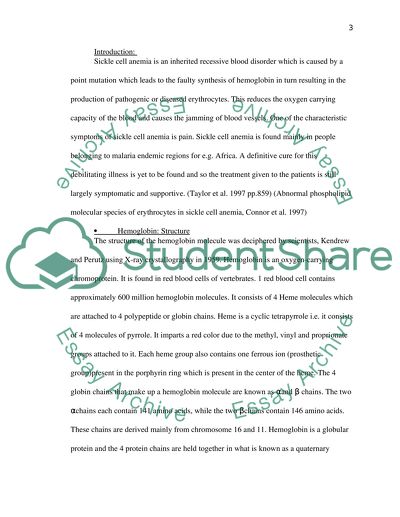Molecular Biology of Sickle Cell Anemia Term Paper. Retrieved from https://studentshare.org/biology/1461280-molecular-biology-of-sickle-cell-anemia
Molecular Biology of Sickle Cell Anemia Term Paper. https://studentshare.org/biology/1461280-molecular-biology-of-sickle-cell-anemia.


